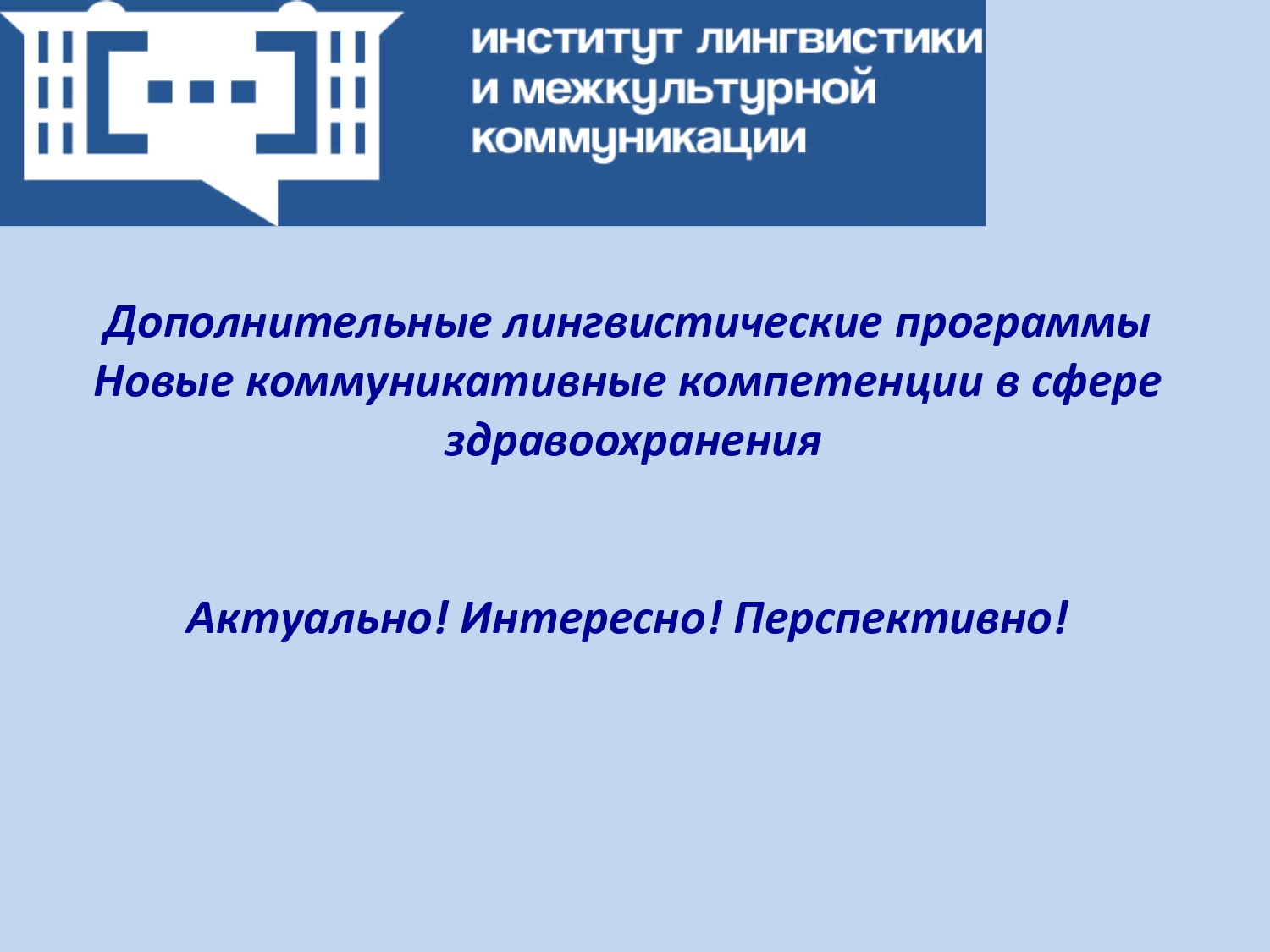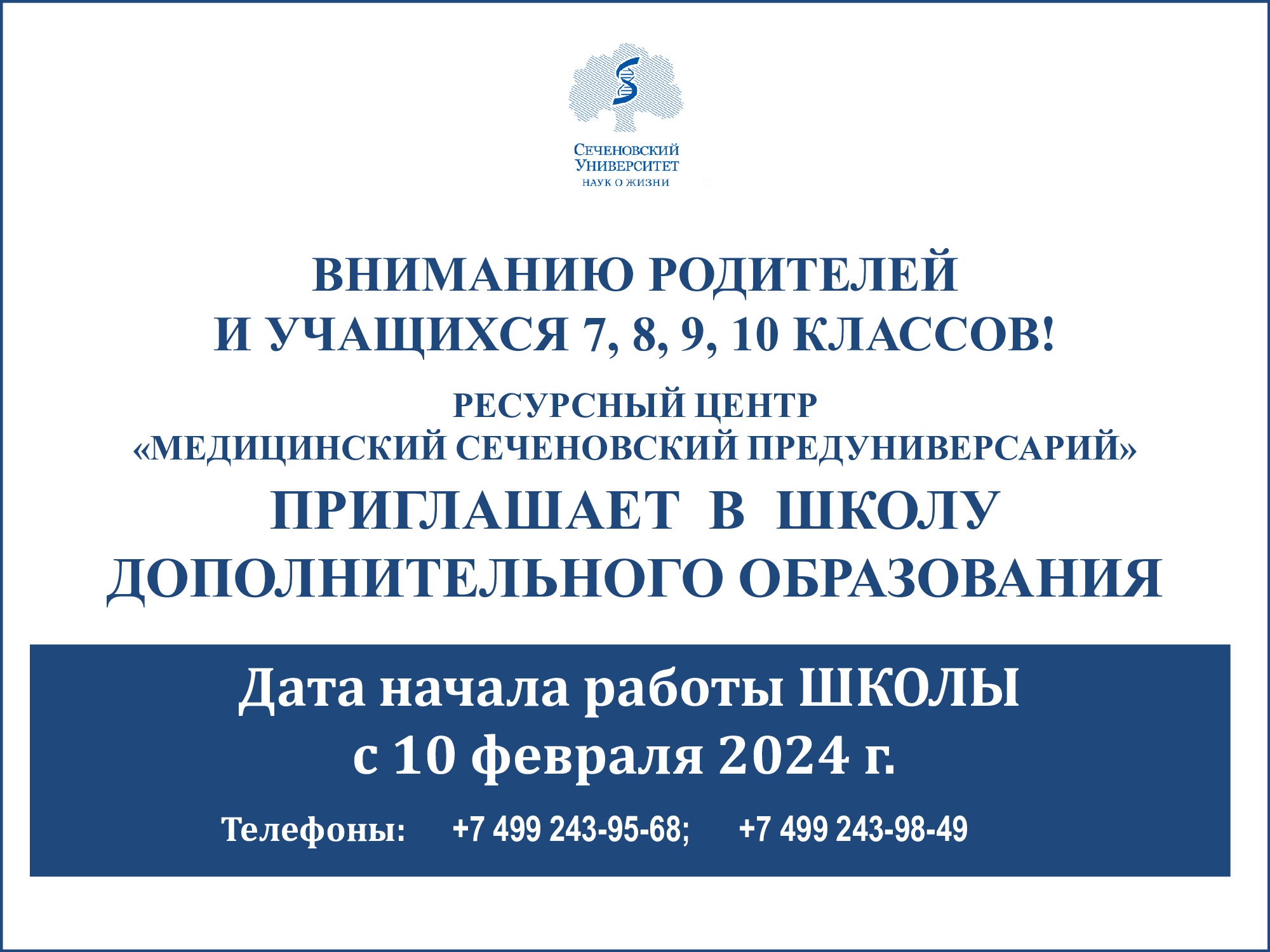|
Protective effect of acyzol in a model of carbon tetrachlorideinduced hepatotoxicity
|
|
Шахмарданова С.А. (Доцент)
Тарасов В.В. (Директор)
Несвижский Юрий Владимирович (Профессор)
|
BioNanoScience |
|
|
The present study investigates the hepatoprotective effect of a novel zinc-containing drug acyzol in comparison with silymarin, a medicinal extract of milk thistle (Silybum marianum). The hepatoprotective effect was studied in 40 albino nonlinear male rats in a model of toxic liver injury induced by intragastric administration of carbon tetrachloride. Both drugs were diluted in water and administered intragastrically at doses 10 mg/kg (acyzol) and 100 mg/kg (silymarin) for 10 days twice daily, after development of clinical toxic hepatitis. Biochemical and functional indicators of the liver parenchyma demonstrated that both drugs reduced mortality, normalized the body and relative liver weight, reduced intensity of cytolytic, cholestatic, and mesenchymal inflammatory syndromes, and restored liver function. The study demonstrates that acyzol and silymarin have comparable hepatoprotective effect, thus, providing a rationale for the use of acyzol in complex therapy of toxic hepatitis and hepatosis.
Читать
тезис
Публикация |
|
Native and Activated Hepatic Stellate Cells Stimulate Liver Regeneration in Rats After Partial Hepatectomy and 2-Acetylaminofluorene Injection
|
|
Шахмарданова С.А. (Доцент)
Замятнин А. А. (Директор)
Несвижский Юрий Владимирович (Профессор)
|
BioNanoScience |
|
|
One the current challenges of modern hepatology is to find new approaches to stimulate liver regeneration and to find new methods for liver disease treatment. Cell therapies, which are based on using regional stem cells for disease treatment, are under active development. However, studies, devoted to their transplantation, are currently scarce. In recent years, hepatic stellate cells are considered to be hepatic stem cells. It is known that activated hepatic stellate cells can transdifferentiate into myofibroblasts and lead to liver fibrosis. The aim of our work was to study the influence of native and activated hepatic stellate cells in vivo by lead nitrate injection after transplantation into partial hepatectomized rats, which is considered to be a classical model to study liver regeneration. Injection of 2-acetylaminofluorene (AAF), which selectively eliminates hepatocyte proliferation, was used to understand the hepatic stellate cells role in liver regeneration process better. Our results suggest that transplanted native and activated hepatic stellate cells can differentiate into hepatocyte-like cells and positively influence liver regeneration without inducing liver fibrosis.
Читать
тезис
Публикация |
|
FastPCR: An in silico tool for fast primer and probe design and advanced sequence analysis
|
|
Самуилова О. В. (Доцент)
Замятнин А. А. (Директор)
Несвижский Юрий Владимирович (Профессор)
|
Genomics |
|
|
Polymerase chain reaction (PCR) is one of the most important laboratory techniques used in molecular biology, genetics and molecular diagnostics. The success of a PCR-based method largely depends on the correct nucleic acid sequence analysis in silico prior to a wet-bench experiment. Here, we report the development of an online Java-based software for virtual PCR on linear or circular DNA templates and multiple primer or probe search from large or small databases. Primer or probe sensitivity and specificity are predicted by searching a database to find sequences with an optimal number of mismatches, similarity and stability. The software determines primer location, orientation, efficiency of binding and calculates primer melting temperatures for standard and degenerate oligonucleotides. The software is suitable for batch file processing, which is essential for automation when working with large amounts of data. The online Java software is available for download at http://primerdigital.com/tools/pcr.html. Accession numbers for the sequences resulting from this study: EU140956 EU177767 EU867815 EU882730 FJ975775-FJ975780 HM481419 HM481420 KC686837-KC686839 KM262797.
(PDF) FastPCR: An in silico tool for fast primer and probe design and advanced sequence analysis. Available from: https://www.researchgate.net/publication/316890940_FastPCR_An_in_silico_tool_for_fast_primer_and_probe_design_and_advanced_sequence_analysis [accessed Dec 25 2018]. Читать
тезис
Публикация |
|
Rational Design of Recombinant Papain-Like Cysteine Protease: Optimal Domain Structure and Expression Conditions for Wheat-Derived Enzyme Triticain-?
|
|
Гороховец Н. В. (Ведущий научный сотрудник)
Замятнин А. А. (Директор)
Несвижский Юрий Владимирович (Профессор)
|
International Journal of Molecular Sciences |
|
|
Triticain-α is a papain-like cysteine protease from wheat (Triticum aestivum L.) that possesses activity towards toxic gluten-derived peptides, and was thus proposed as a novel therapeutic tool for celiac disease. We report an original approach employing rational design of domain architecture of Triticain-α and selection of the appropriate expression system for development of cheap and efficient protocol yielding active recombinant enzyme. The segregated catalytic domain of Triticain-α did not adopt native structure in bacteria, neither being expressed as a single protein nor upon conjugation or co-expression with extrinsic chaperones. Meanwhile, its attachment to prodomain of the enzyme resulted in generation of insoluble (inclusion bodies) product that can be transformed into active protease upon refolding in vitro. The estimated yield of the product was affected by affinity six-histidine tag required for its single-step purification with the preferable N-terminal position of the tag. Expression of the two-domain Triticain-α construct in yeast (Pichia pastoris) strain GS115 and bacterial (Escherichia coli) strain Rosetta gami B (DE3) led to the accumulation of a soluble protein, which underwent autocatalytic maturation during expression (in yeast)/purification (in bacteria) procedures and exhibited pronounced protease activity. Furthermore, expression and solubility of such construct in Rosetta gami B (DE3) cells was improved by reducing the temperature of the bacterial growth yielding more active enzyme than yeast counterpart presumably due to facilitated formation of a characteristic disulfide bond critical for maintaining the catalytic site. We suggest that these findings are helpful for obtaining active Triticain-α preparations for scientific or medical applications, and can be employed for the design and production of beneficial recombinant products based on other papain-like cysteine proteases.
Читать
тезис
Публикация |
|
Postnatal LPS Challenge Impacts Escape Learning and Expression of Plasticity Factors Mmp9 and Timp1 in Rats: Effects of Repeated Training
|
|
Леш Клаус-Петер Юлиус (Заведующий лабораторией психиатрической нейробиологии)
Стрекалова Т.В. (Заместитель pуководителя лаборатории психиатрической нейробиологии)
Несвижский Юрий Владимирович (Профессор)
|
Neurotoxicity Research |
|
|
Bacterial intoxication associated with inflammatory conditions during development can impair brain functions, in particular evolutionarily novel forms of memory, such as explicit learning. Little is known about the dangers of early-life inflammation on more basic forms of learning, for example, the acquisition of motor escape abilities, which are generally better preserved under pathological conditions. To address this limitation in knowledge, an inflammatory response was elicited in Wistar pups by lipopolysaccharide (LPS) injections (25 μg/kg) on postnatal days P15, P18 and P21. The acquisition of escape behaviour was tested from P77 by active avoidance footshock model and water maze. Open-field behaviour and blood corticosterone levels were also measured. Rat brain tissue was collected from pups 2 h post-injection and from adult rats which either underwent escape training on P77-P81 or remained untrained. mRNA levels of developmental brain plasticity factors MMP-9 and TIMP-1 were investigated in the medial prefrontal cortex and ventral/dorsal hippocampus. LPS-challenged rats displayed moderately deficient escape responses in both memory tests, increased freezing behaviour and, surprisingly, reduced blood cortisol levels. Mmp9 and Timp1, and their ratio to one another, were differentially altered in pups versus adult untrained rats but remained unchanged overall in rats trained in either learning task. Together, our data indicate that systemic pro-inflammatory response during early postnatal development has long-lasting effects, including on the acquisition of motor escape abilities and plasticity factor expression, into adulthood. Our data suggest that altered stress response could possibly mediate these deviations and repeated training might generate positive effects on plasticity under the employed conditions.
Читать
тезис
Публикация |
|
Human cytomegalovirus-mediated immunomodulation: Effects on glioblastoma progression
|
|
Уласов И.В. (Ведущий научный сотрудник)
Кузнецова Е.Б. (Ведущий научный сотрудник)
Несвижский Юрий Владимирович (Профессор)
|
Biochimica et Biophysica Acta - Reviews on Cancer |
|
|
The presence of human cytomegalovirus (HCMV) and glioblastoma multiforme (GBM), first established in 2002, has developed into an area of considerable interest and controversy. Numerous studies have found evidence of possible HCMV infection of GBM tumor cells as well as myriad onco- and immunomodulatory properties exhibited by HCMV antigens and transcripts, while recent reports have failed to detect HCMV particles in GBM and question the virus’ role in tumor progression. This review highlights the known immunomodulatory properties of HCMV, independent of GBM infection status, that help drive the virus from peripheral blood into the vital tissues and subsequently dampen local immune response, assisting GBM tumors in evading immune surveillance and contributing to the disease’s poor prognosis. Emerging antiviral approaches to treating GBM, including antiviral drugs and immunotherapies directed against HCMV, are also examined.
Читать
тезис
Публикация |
|
Rapid and affordable genome-wide bisulfite DNA sequencing by XmaI-reduced representation bisulfite sequencing
|
|
Залетаев Д.В. (Руководитель лаборатории)
Кузнецова Е.Б. (Ведущий научный сотрудник)
Несвижский Юрий Владимирович (Профессор)
|
Epigenomics |
|
|
Aim: To develop a reduced representation bisulfite sequencing (RRBS) approach for rapid and affordable genome-wide DNA methylation analysis. Methods: We have selected restriction endonuclease XmaI to produce RRBS library fragments. After digestion and partial fill-in DNA fragments were ligated to barcoded adapters, bisulfite converted, size-selected, and sequenced on the Ion Torrent Personal Genome Machine. XmaI-RRBS results were compared with the previously published RRBS data. Results: We have developed an XmaI-RRBS method for rapid and affordable genome-wide DNA methylation analysis, with library preparation taking only 4 days and sequencing possible within 4 h. We have also addressed several challenges in order to further improve the RRBS technology. XmaI-RRBS may be performed on degraded DNA samples and is compatible with the bench-top next-generation sequencing machines.
Читать
тезис
Публикация |
|
Dual Role of the Extracellular Domain of Human Mucin MUC1 in Metastasis
|
|
Рубцов М. А. (Доцент)
Свистунов А.А. (Первый проректор)
Несвижский Юрий Владимирович (Профессор)
|
Journal of Cellular Biochemistry |
|
|
Human mucin MUC1 plays an important role in cancer development. The increased level of this molecule expression during cancer cell progression induces metastasis and is associated with poor prognosis for patients. There is a large body of experimental data on the role of various functional domains of human mucin MUC1 in metastasis. While, the cytoplasmic domain determined to play a definitive role, the influence of extracellular domain on cancer cell invasiveness still remains unclear. The present paper reveals that the extracellular domain of MUC1 molecule consists of two functional subdomains-the region of tandem repeats (TR) and the region of irregular repeats (IR). We demonstrate the ability of each of these subdomains to alter the invasiveness of cancer cells. The presence of the MUC1 molecules containing TR subdomain (MUC1-TR) on the surface of low-invasive cancer cells leads to the increase in their transendothelial migration potency, while the addition of the IR subdomain to the MUC1-TR molecule (MUC1-IR-TR) restores their natural low invasiveness. J. Cell. Biochem. 118: 4002-4011, 2017. © 2017 Wiley Periodicals, Inc.
Читать
тезис
PUBMED DOI |
|
A One-Step PCR-Based Assay to Evaluate the Efficiency and Precision of Genomic DNA-Editing Tools
|
|
Рубцов М. А. (Доцент)
Свистунов А.А. (Первый проректор)
Несвижский Юрий Владимирович (Профессор)
|
Molecular Therapy-Methods & Clinical Development |
|
|
Despite rapid progress, many problems and limitations persist and limit applicability of gene editing techniques. Making use of meganucleases, TALENs or CRISPR/Cas9-based tools requires an initial step of pre-screening to determine the efficiency and specificity of the designed tools. This step remains time- and material-consuming. Here, we propose a simple, cheap, reliable, time-saving and highly sensitive method to evaluate a given gene editing tool based on its capacity to induce chromosomal translocations when combined with a reference engineered nuclease. In the proposed technique designated as “ENIT” for Engineered Nucleases-Induced Translocations, a plasmid coding for the DNA-editing tool to be tested is co-transfected into carefully chosen target cells along with that for an engineered nuclease of known specificity and efficiency. If the new enzyme efficiently cuts within the desired region, specific chromosomal translocations will be generated between the two targeted genomic regions and be readily detectable by a one-step PCR or qPCR assay. The PCR product thus obtained can be directly sequenced thereby determining the exact position of the double-strand breaks induced by the gene-editing tools. As a proof of concept, ENIT was successfully tested in different cell types and with different meganucleases, TALENs and CRISPR/Cas9-based editing tools.
(PDF) A one-step PCR-based assay to evaluate efficiency and precision of genomic DNA-editing tools. Available from: https://www.researchgate.net/publication/314714362_A_one-step_PCR-based_assay_to_evaluate_efficiency_and_precision_of_genomic_DNA-editing_tools [accessed Dec 25 2018]. Читать
тезис
Публикация |
|
Влияние введения смеси фосфотидилхолинов на состояние кортикального цитоскелета волокон камбаловидной мышцы крысы
|
|
Огнева И. В. (Профессор)
Свистунов А.А. (Первый проректор)
Несвижский Юрий Владимирович (Профессор)
|
Авиакосмическая и экологическая медицина |
|
|
Цель работы - оценка состояния кортикального цитоскелета волокон камбаловидной мышцы крысы в результате 6-часового антиортостатического вывешивания на фоне предшествующего, в течение 3 сут по 100 мкг/сут, введения смеси фосфатидилхолинов (лецитина). Данные о периметре волокон, толщине подмембранного цитоскелета и доле разрывов в нем относительно периметра получали, используя иммуногистохимическую окраску на альфа-актинин-4. Периметр волокон оставался неизменным во всех группах исследования. При этом доля разрывов была выше в группах вывешивания, чем в соответствующих контрольных группах. Толщина окрашенного слоя, соответствующего подмембранному цитоскелету, не менялась в контрольных группах и в группе вывешивания без лецитина, однако в группе вывешивания на фоне лецитина она достоверно увеличивалась по сравнению с соответствующей контрольной группой на 27 % (p < 0,05) соответственно.
Purpose of the work was to assess the cortical cytoskeleton of m. soleus fibers from rats after 6-hr tail-suspension preceded by 3 days of phosphatidylcholine (lecithin) injections at a dose of 100 µг/d. Data about the fiber perimeter, submembrane cytoskeleton thickness and percentage of bonds breaks along the perimeter were obtained using the alpha-actinin-4 anti-body stain. The fiber perimeter remained unchanged in all groups under study. However, the percentage of breaks was high in suspension groups but not in respective groups of control. Thickness of the stained layer commensurate to the submembrane cytoskeleton did not change in the control groups and in the suspension group without lecithin injections but increased reliably in the suspension group that recieved injections by 27 % (p < 0.05) in comparison with its control.
Читать
тезис
Публикация |
|
Multicomponent nanocrystals with anti-Stokes luminescence as contrast agents for modern imaging techniques
|
|
Хайдуков Е. В. (Заведующий лабораторией)
Свистунов А.А. (Первый проректор)
Несвижский Юрий Владимирович (Профессор)
|
Advances in Colloid and Interface Science |
|
|
Lanthanide-doped upconversion nanoparticles (UCNPs) have recently attracted great attention in theranostics due to their exceptional optical and physicochemical properties, which enable the design of a novel UCNP-based nanoplatform for luminescent imaging, temperature mapping, sensing, and therapy. In addition, UCNPs are considered to be ideal building blocks for development of multimodal probes for cells and whole body imaging, exploiting simple variation of host matrix, dopant ions, and surface chemistry. Modalities responsible for magnetic resonance imaging (MRI), computed tomography (CT), and positron emission tomography (PET)/single-photon emission computed tomography (SPECT) are embedded in a single UC nanocrystal, providing integrating effect over any modality alone in terms of the efficiency and sensitivity for clinical innovative diagnosis through multimodal bioimaging. In particular, we demonstrate applications of UCNPs as a new nanoplatform for optical and multimodal cancer imaging in vitro and in vivo and extend discussions to delivery of UCNP-based therapeutic agents for photodynamic and photothermal cancer treatments.
Читать
тезис
Публикация |
|
Inhibition of Prion Propagation by 3,4-Dimethoxycinnamic Acid
|
|
Стройлова Ю.Ю. (Старший научный сотрудник)
Свистунов А.А. (Первый проректор)
Несвижский Юрий Владимирович (Профессор)
|
Phytotherapy Research |
|
|
PUBMED DOI |
|
Sialylation facilitates self-assembly of 3D multicellular prostaspheres by using cyclo-RGDFK(TPP) peptide
|
|
Акасов Р. А. (Научный сотрудник)
Свистунов А.А. (Первый проректор)
Несвижский Юрий Владимирович (Профессор)
|
OncoTargets and Therapy |
|
|
Background Prostaspheres-based three dimensional (3D) culture models have provided insight into prostate cancer (PCa) biology, highlighting the importance of cell–cell interactions and the extracellular matrix (EMC) in the tumor microenvironment. Although these 3D classical spheroid platforms provide a significant advance over 2D models mimicking in vivo tumors, the limitations involve no control of assembly and structure with only limited spatial or glandular organization. Here, matrix-free prostaspheres from human metastatic prostate carcinoma PC3 and DU145 cell lines and their respective gemcitabine resistant (GemR) variants were generated by using cyclic Arg-Gly-Asp-D-Phe-Lys peptide modified with 4-carboxybutyl-triphenylphosphonium bromide (cyclo-RGDfK(TPP)). Materials and methods Microscopic imaging, immunocytochemistry (ICC), flow cytometry, sialidase, and WST-1 cell viability assays were used to evaluate the formation of multicellular tumor spheroid (MCTS), cell survival, morphologic changes, and expression levels of α2,6 and α2,3 sialic acid (SA) and E- and N-cadherin in DU145, PC3, and their GemR variants. Results By using the cyclo-RGDfK(TPP) peptide platform in a dose- and time-dependent manner, both DU145 and DU145GemR cells formed small MCTS. In contrast, PC3 and PC3GemR cells formed irregular multicellular aggregates at all concentrations of cyclo-RGDfK(TPP) peptide, even after 6 days of incubation. ICC and flow cytometry results revealed that DU145 cells expressed higher amounts of E-cadherin but lower N-cadherin compared with PC3 cells. By using Maackia amurensis (α2,3-SA-specific MAL-II) and Sambucus nigra (α2,6-SA specific SNA) lectin-based cytochemistry staining and flow cytometry, it was found that DU145 and DU145GemR cells expressed 5 times more α2,6-SA than α2,3-SA on the cell surface. PC3 cells expressed 4 times more α2,3-SA than α2,6-SA, and the PC3GemR cells showed 1.4 times higher α2,6-SA than α2,3-SA. MCTS volume was dose-dependently reduced following pretreatment with α2,6-SA-specific neuraminidase (Vibrio cholerae). Oseltamivir phosphate enhanced cell aggregation and compaction of 3D MCTS formed with PC3 cells. Conclusion The relative levels of specific sialoglycan structures on the cell surface correlate with the ability of PCa cells to form avascular multicellular prostaspheres.
Читать
тезис
Публикация |
|
Macroporous modified poly (vinyl alcohol) hydrogels with charged groups for tissue engineering: Preparation and in vitro evaluation
|
|
Акасов Р. А. (Научный сотрудник)
Свистунов А.А. (Первый проректор)
Несвижский Юрий Владимирович (Профессор)
|
MATERIALS SCIENCE & ENGINEERING C-MATERIALS FOR BIOLOGICAL APPLICATIONS |
|
|
V. Poly(vinyl alcohol) (PVA) hydrogels are widely employed for various biomedical applications, including tissue engineering, due to their biocompatibility, high water solubility, low protein adsorption, and chemical stability. However, non-charged surface of PVA-based hydrogels is not optimal for cell adhesion and spreading. Here, cross-linked macroporous hydrogels based on low molecular weight acrylated PVA (Acr-PVA) was synthesized by modification of the pendant alcohol groups on the PVA with glycidyl methacrylate (GMA). To enhance cell affinity, charged groups were introduced to the hydrogel composition. For this purpose, Acr-PVA was copolymerized with either negatively charged acrylic acid (AA) or positively charged 2-(diethylamino) ethyl methacrylate (DEAEMA) monomers. A surface charge of the obtained hydrogels was found to be in function of the co-monomer type and content. Confocal microscopy observations confirmed that adhesion and spreading of both mouse fibroblasts (L929) and human mesenchymal stem cells (hMSC) on the modified Acr-PVA-AA and Acr-PVA-DEAEMA hydrogels were better than those on the non-modified Acr-PVA hydrogel. The increase of DEAEMA monomer content from 5 to 15 mol% resulted in the enhancement of cell viability which was 1.5-fold higher for Acr-PVA-DEAEMA-15 hydrogel than that of the non-modified Acr-PVA hydrogel sample.
Читать
тезис
Публикация |
|
HER2-specific recombinant immunotoxin 4D5scFv-PE40 passes through retrograde trafficking route and forces cells to enter apoptosis
|
|
Балалаева И. В. (Старший научный сотрудник)
Свистунов А.А. (Первый проректор)
Несвижский Юрий Владимирович (Профессор)
|
Oncotarget |
|
|
Immunotoxin 4D5scFv-PE40 is a recombinant protein that comprises 4D5scFv antibody as a targeting module and fragment of Pseudomonas exotoxin A as an effector (toxic) one. The immunotoxin has shown pronounced antitumor effect on cancer cells overexpressing HER2 receptor in vitro and on HER2-positive experimental tumors in vivo. We clarified the mechanism of 4D5scFv-PE40 activity that is of particular importance in the case of targeted therapeutic agent aimed at personalizing treatment of disease in relation to molecular genetic characteristics of each patient. After specific binding to HER2 on the cell surface and clathrin-mediated endocytosis the immunotoxin passes through retrograde trafficking route. During this route the immunotoxin molecule is supposed to undergo enzymatic processing that ends in separation of C-terminal and N-terminal fragments of the immunotoxin. Finally, C-terminal functionally active fragment of 4D5scFv-PE40 arrests protein synthesis in cytoplasm followed by cell death via apoptosis.
(PDF) HER2-specific recombinant immunotoxin 4D5scFv-PE40 passes through retrograde trafficking route and forces cells to enter apoptosis. Available from: https://www.researchgate.net/publication/314188519_HER2-specific_recombinant_immunotoxin_4D5scFv-PE40_passes_through_retrograde_trafficking_route_and_forces_cells_to_enter_apoptosis [accessed Dec 25 2018]. Читать
тезис
Публикация |
|
Deep-penetrating photodynamic therapy with KillerRed mediated by upconversion nanoparticles
|
|
Звягин А. В. (Заведующий отделом)
Свистунов А.А. (Первый проректор)
Несвижский Юрий Владимирович (Профессор)
|
Acta Biomaterialia |
|
|
Statement of significance: KillerRed is a protein photosensitizer that holds promise as an alternative for the existing hydrophobic photosensitizers that are widely used in clinical photodynamic therapy (PDT). However, applications of KillerRed to deep-seated tumours are limited by the insufficient penetration depth of the excitation light in highly scattering and absorbing biological tissues. Herein, we reported the deployment of upconversion nanoparticles (UCNPs) to enhance the treatment depth of KillerRed by converting the deep-penetrating near-infrared (NIR) light to upconversion photoluminescence and activating the PDT effect of KillerRed under deep tissues. This work demonstrated clear potential of UCNPs as the NIR-to-visible light converter to overcome the light penetration limit that has plagued PDT application for many years.
Читать
тезис
Публикация |
|
Stable “coloured” states of spirooxazine photochrom molecules immobilized in polymer matrixes by supercritical carbon dioxide
|
|
Тимашев П. С. (Заведующий отделом)
Свистунов А.А. (Первый проректор)
Несвижский Юрий Владимирович (Профессор)
|
Journal of Molecular Liquids |
|
|
Formation of long-lived coloured forms of indoline spirocompounds (spirooxazines and spiropyrans) molecules under matrix immobilization in polar polymer of different chemical structure using supercritical fluid impregnation is studied. Some of such systems acquire additional optical characteristics besides colour – they become fluorophors. Mechanisms of observed changes in optical properties and long-term stability of the resulting coloured forms of indoline spirooxazine in polymers are discussed. Electronic absorption spectra of such coloured forms were recorded in supercritical carbon dioxide medium as well as on air. The results can be applied for creation of optical, biomedical and electronic devices and stable fluorescence composite coverings.
Читать
тезис
Публикация |
|
Algorithm of multi-criterion green process assessment for renewable raw materials bioconversion
|
|
Якубович Л. М. (Доцент)
Свистунов А.А. (Первый проректор)
Несвижский Юрий Владимирович (Профессор)
|
Journal of Cleaner Production |
|
|
Green Chemistry is one of the most important and practically used tools to integrate principles of sustainable development and green economy in the field of chemistry and the chemical industry in various countries. There is a number of metrics in the field of green chemistry. The research presented is an original algorithm of multi-criterion green process assessment for renewable raw materials bioconversion. The algorithm is used when the process of obtaining the same target substance N is possible to be carried out in many ways (or under different conditions). In this case, the researcher task is to choose the best process in compliance with the principles of green chemistry. The multiple-factor complex assessment is to be used to choose the optimum process conditions. The algorithm designed was tested for efficiency in choosing the optimal processes of acid hydrolysis of deproteinized meals. The deproteinized sunflower meal preprocessing efficiency analysis was carried out during the course of its microbiological conversion into a vegetable protein and carbohydrate feed supplement taking into account the principles of green chemistry. The methodology testing was based on the experimental data obtained by chemical hydrolysis of deproteinized residues, and two-stage pretreatment process of deproteinized residues processing comprising the steps of chemical and enzymatic hydrolysis. The combination of chemical and enzymatic hydrolysis in two-stage deproteinized sunflower meal processing was justified. The proposed algorithm allowed not only to determine the effective ranges of parameters of deproteinized sunflower meal processing, but also allowed to justify the possibility of its optimization due to the both processes combined.
Читать
тезис
Публикация |
|
Similarity of female central (hypogonadotropic) hypogonadism and postmenopause
|
|
Зекцер В.Ю. (Ассистент)
Свистунов А.А. (Первый проректор)
Несвижский Юрий Владимирович (Профессор)
|
Climacteric |
|
|
Objectives: Central (hypogonadotropic) hypogonadism in women could be a cause of persistent amenorrhea and hypoestrogenemia as observed in postmenopause. This study aimed to compare the clinical, hormonal and biochemical features in women with non-physiological (central hypogonadism) and physiological (postmenopause) hypoestrogenemia.
Methods: A total of 161 young women, median age 24.9 years (interquartile range (IQR) 21.2; 30.5) with central hypogonadism (with isolated hypogonadotropic hypogonadism, n = 76, and with hypopituitarism, n = 85), 53 healthy young women, median age 23.9 years (IQR 23.1; 28.0) and 50 healthy postmenopausal women, median age 56.0 years (IQR 53.1; 58.5), were examined. Psychoemotional, neurovegetative and urogenital symptoms, sex steroid levels, parameters of lipid and mineral metabolism were evaluated.
Results: In young women with central hypogonadism, the frequencies of psychoemotional, neurovegetative and urogenital complaints differed significantly from those in healthy young women and were similar to those in postmenopausal women. Concentrations of estradiol, testosterone, dehydroepiandrosterone sulfate, parameters of lipid and mineral metabolism as well as quality of life in women with central hypogonadism were not typical of healthy young women but were similar to those of postmenopausal women of middle/old age.
Conclusions: Despite the young age of women with central hypogonadism, clinical, hormonal and biochemical abnormalities were similar in many aspects to those in postmenopausal women at middle/old age. These revealed features could be considered as signs of premature aging in young amenorrheic women with low gonadotropin levels.
Читать
тезис
Публикация |
|
Application of metabolomics: Focus on the quantification of organic acids in healthy adults
|
|
Носырев А. Е. (Заведующий лабораторией)
Свистунов А.А. (Первый проректор)
Несвижский Юрий Владимирович (Профессор)
|
International Journal of Molecular Medicine |
|
|
Metabolomics, a 'budding' discipline, may accurately reflect a specific phenotype which is sensitive to genetic and epigenetic interactions. This rapidly evolving field in science has been proposed as a tool for the evaluation of the effects of epigenetic factors, such as nutrition, environment, drug and lifestyle on phenotype. Urine, being sterile, is easy to obtain and as it contains metabolized or non‑metabolized products, is a favored study material in the field of metabolomics. Urine organic acids (OAs) reflect the activity of main metabolic pathways and have been used to assess health status, nutritional status, vitamin deficiencies and response to xenobiotics. To date, a limited number of studies have been performed which actually define reference OA values in a healthy population and as reference range for epigenetic influences, and not as a reference to congenital metabolic diseases. The aim of the present study was thus the determination of reference values (RVs) for urine OA in a healthy adult population. Targeted metabolomics analysis of 22 OAs in the urine of 122 healthy adults by gas chromatography‑mass spectrometry, was conducted. Percentile distributions of the OA concentrations in urine, as a base for determining the RVs in the respective population sample, were used. No significant differences were detected between female and male individuals. These findings can facilitate the more sensitive determination of OAs in pathological conditions. Therefore, the findings of this study may contribute or add to the information already available on urine metabolite databases, and may thus promote the use of targeted metabolomics for the evaluation of OAs in a clinical setting and for pathophysiological evaluation. However, further studies with well‑defined patients groups exhibiting specific symptoms or diseases are warranted in order to discern between normal and pathological values.
Читать
тезис
Публикация |








